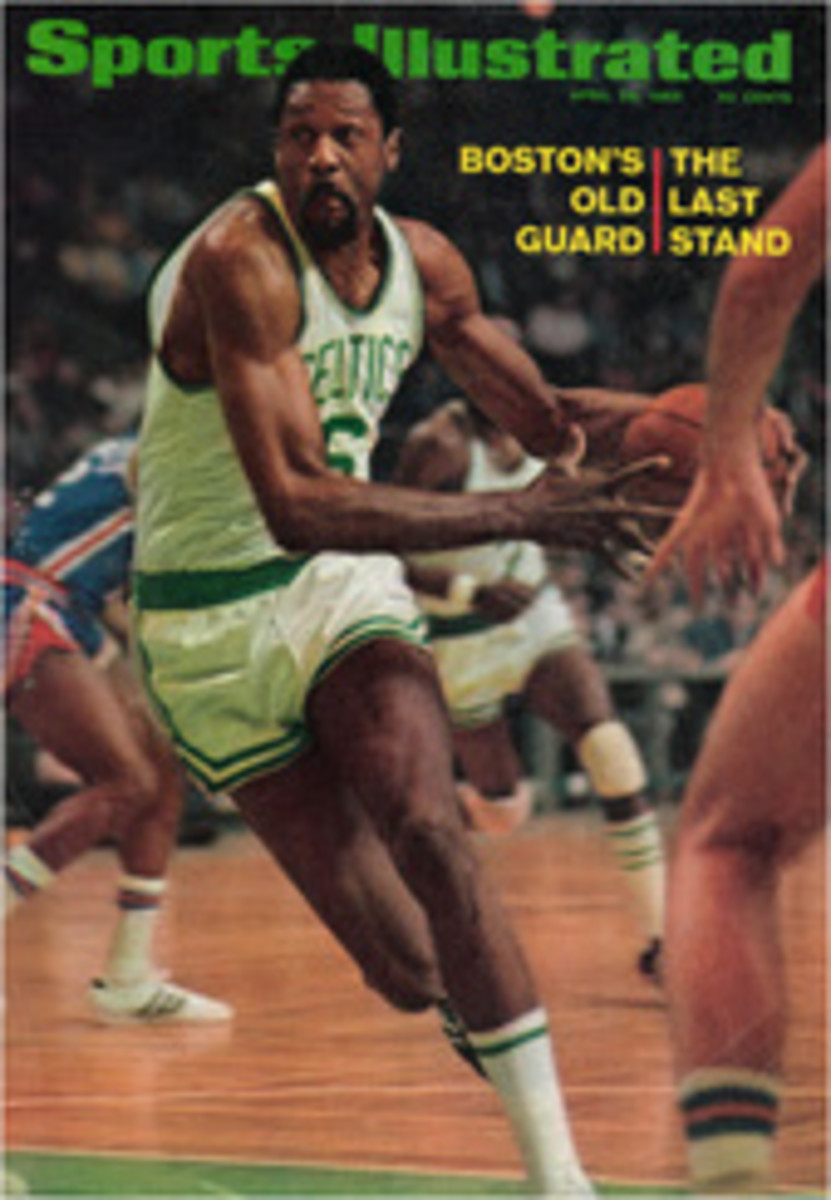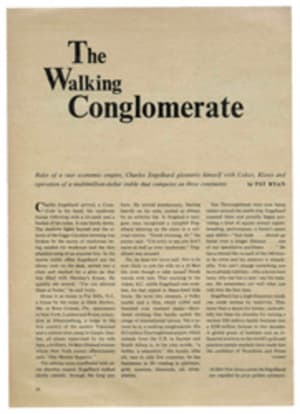
Presenting the Ben-Hur Open
Golf on campus is very big these days—like grass cookies, Philip Roth and nudity in psych lab. Why, just a fortnight ago one young miss pinched Bruce Fleisher's bottom on the 18th tee at Augusta. Then last week Dave Williams came along with his show. Now Dave's show is really big. Bigger than life even, as he might say. Or bigger than golf itself, although golf and life are the same game to Coach Dave and the members of his Houston team.
The name of Dave's show is the All-America Intercollegiate Invitation Golf Championships, if you can swallow that. Williams encourages people to call it the Double A, Double I. In addition to the AAII itself, there is a tournament eve banquet—500 people strong—a few movies, hall-of-fame inductions, barbecues, dances, Archie Bell and the Drells, a parade downtown, sheet-size banners, babies with balloons, a man dressed up as a bear, a lot of drunks yelling things, beauty queens (two to a team), several other girls running around in red-and-white-striped minicostumes and Shasta the Cougar. "The NCAA tournament is the U.S. Open of college golf and we are the Masters," says Dave Williams. Maybe—but what the tournament really is, says another man, is the Ben-Hur Open.
All of this marvelous nonsense started 15 years ago when Williams decided that what college golf needed was some records, like football and basketball. "Got to go out and get me some records," Dave said. So he invited seven teams over to play four rounds, get their tails wagged off and give his Houston team some records. Later he expanded the field to 16 teams, added new frills each season and came up to last week with victories in all but two of his tournaments.
This year's tournament had golfers from 20 schools battling each other in five categories—team medal play team match play, low two-ball, low four-ball and individual medal—for points that would add up to an overall champion.
Unlike the NCAA tournament, where teams field five men to count the best four scores, or most other college events, where six play to count four, just four men play in the All-America, all scores counting. It is a format ripe for criticism from coaches who have depth, but it is a fair one, limiting the field to a workable number and saving on expenses. Coach Williams says the best part of it is that four players and a coach can easily ride to the tournament in a car. He says, also, that most teams don't have three good golfers, much less four, much less six.
Not all the coaches agree with Williams. "Who wants to ride in a car for 1,000 miles?" says Buster Bishop, the coach at Florida. "Besides, the object of college golf is participation." His team flies on longer trips, and he likes a lot of his men along because they are all so good. Four of them, seniors, won the NCAA championship last year, beating Houston by a stroke and breaking the Cougars' four-year hold on the title. Two others are freshmen, who sometimes nudge out their older teammates in tournaments around the South but who could not play in the All-America.
Another coach speaking from strength was George Hannon of Texas, who had the one-two punch of Chip Stewart and Rik Massengale back from the team that upset Houston to win the tournament last year. The AAII, in fact, had eight of the top 10 teams in the 1968 NCAA championships and six of the returning 11 All-Americas.
"I figure the home course means one stroke a round per man," said Hannon. "That may seem a lot, but that's how much Houston should be favored." Williams, meanwhile, was talking up Texas while most of the other money was on Florida.
"I'd pick us," said Steve Melnyk, the ace of the Florida team. "We're a little tired of hearing about these Texas teams. Let them come down our way, get in that Bermuda grass and all those sand traps and then see who wins. They never come to us anymore, we have to come here. Well, we're ready."
Melnyk, who is 6'1" and weighs 235 pounds, rolls along the fairway like a human cantaloupe. He is called Deity by Richard Spears, Florida's No. 3 man. The first two days went pretty much as expected, with Deity leading individual play with an eight-under-par 136 as Florida stayed just off the lead in all other categories. The biggest surprises were Houston, which failed to get a man under par and was 13 strokes off the team pace, and Texas A&M, which came out of nowhere to lead all four team divisions.
The latter circumstance brought on a bevy of the latest Aggie jokes. Sample: Why don't Aggies kill flies on the golf course? Because they're the school bird. All that Texas A&M Coach Henry Ransom, a Ryder Cup player in the early '50s, kept saying was that his men were sophomores last year and now they were juniors. The fact that the Aggies had three men at once under par midway through the tournament was no joke to the men of Texas and Houston.
On the third day, though, A&M went into match-play competition with Houston and fell back into the pack where everyone said they belonged. The Cougars finally were making their move, with No. 1 man Bob Barbarossa firing a one under 71 and Doug Olson shooting par. In the other half of the match-play championship draw Dean Overturf of Texas scored 68 to offset an 81 by his teammate Massengale as the Longhorns edged Florida and qualified to meet Houston in the final.
By now Florida led in team medal—the division that determines the champion—but Texas and Houston had both climbed to within two strokes of the top. The next day would be decisive.
As the final foursomes made their way around the pine forest on Saturday, the All-America produced the elements and atmosphere that make it very special among golf tournaments. There were the balloons, of course, and the queens and a band next to the scoreboard. There were the Austin crowds crying, "Hook 'em, Horns," and the Houstons shouting back, "Eat 'em, Coogs," and everybody drinking beer and pushing and shoving close enough to stop their men's shots from going astray, maybe even to kick one back on the fairway. After Florida had shot itself out of contention early the crowd had what it wanted: Texas and Houston fighting down to the wire again.
The teams made the turn all even at three under par, but Stewart and Massengale took command early on the back nine, both shooting three under, and Texas led by five shots through 14 holes. At the 15th, Houston got three back, when Tom Kite, a Texas freshman, bogeyed and the Cougars' John Mahaffey, then Bruce Ashworth behind him, birdied. Kite went three more over par on the closing holes to put Texas down by a shot as the teams of Stewart-Massengale and Barbarossa-Ashworth approached the 18th, a par-5 dogleg right.
In the true spirit of Ben Hogan and Byron Nelson, all four Texas golfers birdied the hole, Ashworth from the right rough and Barbarossa from sand, as Houston won back its championship. Melnyk won the individual title, laughing, but not before he had received a fine scare from Shasta the Cougar, screeching.
Dave Williams was not worried about that. "Well, she put seven stitches in one ol' boy out here a few years ago, but she just sits around mostly," he said. "Next year we're gonna really roll with this thing. National TV, Reveille the A&M dog, Bevo the Steer, you bet."
All at the Double A, Double I. Bring your clubs.
PHOTO
STEVE MELNYK OF FLORIDA BEAT OUT ALL THE TEXANS FOR THE INDIVIDUAL TITLE

